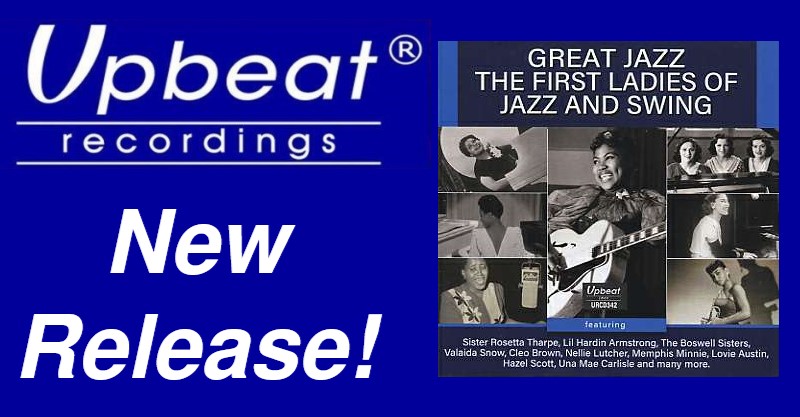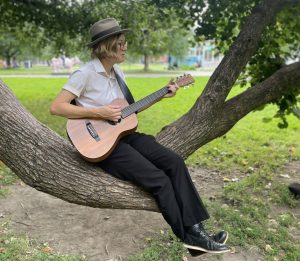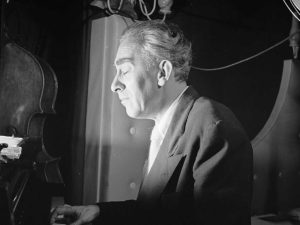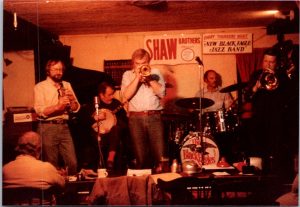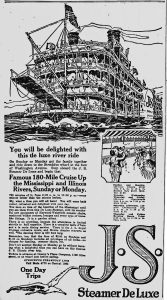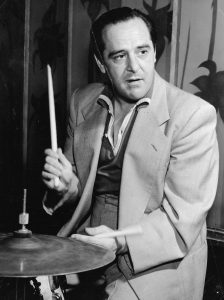We received a number of informed replies to Ed Berlin’s article about Gus Haenschen’s relationship to Scott Joplin in the May issue. In the interest of space below are the three we feel our readers will be most interested in and add most to the conversation. The album being discussed is The Missing Link: How Gus Haenschen Got Us From Joplin to Jazz and Shaped the Music Business.
To the Editor:
Thank you for sharing Ed Berlin’s review of the Archeophone CD liner notes and performances by or relating to Gus Haenschen. Berlin’s assessment of the “missing link” assertion about Haenschen’s role in the transition from ragtime to jazz is similar to Mark Berresford’s review of The Missing Link in Vintage Jazz Mart (Autumn 2020).
While commending “Archeophone’s exemplary standards … musician and historian Colin Hancock’s informative and well-researched liner notes … [and] Richard Martin’s lovely, musically-rich transfers and sound restoration,” Mark B. concluded that he could not agree to the “missing link” metaphor, which he likened to the “peculiarly American aphorism, ‘close, but no cigar.’”
Mark readily acknowledged that the first two personal recordings Haenschen and his St. Louis friend and drummer, T. T. “Tom” Schiffer, made in 1916 are clearcut departures from mainstream performances of ragtime and blues. “Whilst Haenschen’s bluesy piano is highly competent and on a par with recorded ragtime performers such as Frank Banta, Mike Bernard, and Joe Batten in England,” Mark wrote, Tom Schiffer’s “exuberant and rhythmically complex playing . . . is far removed from the typical militaristic drumming heard on most ragtime records of the period . . . ”
While pointing out, as you have, that Wilbur Sweatman’s 1916 recordings of “Down Home Rag” or the London recording of Irving Berlin’s “Araby” by The Versatile Four that same year “could equally lay claim to be be contenders for the title of ‘first jazz record,’” neither of those performances “can claim to bring together all the key elements of what we now consider to be ‘jazz’ in the way that the Original Dixieland Jazz Band’s first recordings so conclusively demonstrate.”
Having known Gus Haenschen quite well, I can assure you that he considered himself a commercial musician first and last (“Nobody ever called me ‘Maestro,’” he often said); he was proud of having heard, met, and learned from Scott Joplin how he wanted his music played; yet he never claimed in my presence to have been heavily influenced stylistically by Joplin, and only spoke of him during the “ragtime revival” of the early-1970s.
Haenschen had no interest in being a celebrity himself, and never considered himself one, but was pleased when instrumentalists, vocalists, arrangers, conductors, and recording directors he had helped get started in the music business heaped unsolicited praise upon him. Three incidents of that unsolicited praise are engraved in my memory.
One was riding with him to meet and interview Artie Shaw in a home he was renting in Connecticut. Despite the winter weather, Shaw was standing at the edge of his driveway and when Haenschen parked his Buick sedan and opened the door. Shaw lifted him off the ground with a bear hug, saying to him, “Gus, you put food on our tables when we didn’t know where our next meal was coming from!” Haenschen replied, “Thanks, Artie, but would you please let go of me? I’m in my eighties now!”
The second incident took place in the waiting area surrounding the office of Columbia Records’ John Hammond. Haenschen had agreed to meet a colleague and me in Hammond’s office at 2:00 p.m. A stickler for time, when Haenschen arrived and saw that Hammond was almost 45 minutes late for our interview, he brushed off three secretaries, took off his wristwatch, and barged into Hammond’s office.
Handing Hammond his wristwatch, Haenschen said contemptuously, “Do you know how to use a watch, or do I have to teach you how to tell time?” A moment later, everyone on that floor heard John Hammond exclaim, “Jesus Christ! It’s Gus Haenschen! Gus Haenschen!”
While Haenschen and a colleague were ushered into Hammond’s office, he cancelled two hours of appointments and gleefully called Mitch Miller, Benny Goodman, and others to tell them, “You won’t believe who’s sitting here with me! Gus Haenschen!”
Then he placed a call to California, where he reached Percy Faith. “I’ve got good news and bad news for you,” Hammond said using the speakerphone on his desk. “We’re going to re-do your best-selling albums with a new young conductor named Carl Fenton!” Faith didn’t know what to say at first, but then told Hammond, “Carl Fenton? Isn’t that the name Gus Haenschen used at Brunswick? If he’s still alive, he’d have be almost ninety years old.” Hammond then urged Haenschen to reply. “You know, you’re not too far off,” he said to Faith. “I’m not 90 yet but I’m not far from it and I’m still working.”
While Hammond had Percy Faith on the phone, one of his secretaries reached Les Brown in California. When Hammond came on the line he said to Brown, “I have one of your college professors here in my office. He’s concerned about your grades. I’ll hand him the phone now.”
Haenschen said to him, “Pat Conway and I think you need to work on your clarinet embouchure if you want to get a passing grade. Your saxophone embouchure is passable but not your clarinet embouchure.” Brown, who had studied under pioneer leader Patrick Conway in the mid-1920s in a marching-band school that eventually became part of Ithaca College, immediately recognized Haenschen’s voice and kiddingly promised to work harder. Brown then recalled the many World Broadcasting Company recording sessions he had participated in before his “Band of Reknown” began touring extensively in the late-1930s.
Gus Haenschen continued to conduct the annual spring concerts at Ithaca College, where he was one of the longest-tenured members of the board of trustees. This photo was taken at the last concert he conducted, with Roberta Peters as his guest artist. He was seven months short of his 89th birthday.
The twelfth installment of the series of interviews which Allan Sutton has graciously posted on his website, with much additional information and graphics, will be posted as soon as I can finish it and send it to Allan. This final installment takes up Gus’s St. Louis years but goes on to having him answer personal questions I had given him in advance. His answers reveal sides of the man that only those who worked with him over the years would have known.
Jim Drake
Begin HERE for a quite amazing series of interviews with Gus Haenschen that will be absolutely fascinating to anyone with an interest in the early recording industry.
To the Editor:
I thoroughly enjoyed Ed Berlin’s article (“Is the Gus Haenschen-Scott Joplin Connection Significant?” May, 2021) in The Syncopated Times.
I don’t have much to say about Haenschen—Ed Berlin covered it all. As far as the ODJB, though:
While there have been attempts to reduce the importance of the ODJB’s accomplishments, rarely have two factors been mentioned:
1. Their repertoire still thrives in performance and recordings today.
2. Their recordings profoundly influenced a second generation of musicians—especially Bix, as you know.
To truly assess the ODJB, one must look at all their first wave of recordings from 1917 to 1923, and then, their revival recordings in 1936 and their “documentary” film.
Improvisation and swing were clearly deeply embedded elements in their music—but the earliest recordings severely limited their performance practice, e.g., continuous ensemble playing usurping solo choruses, tempi, and length of performance. Also, I’m sure that a certain nervous anxiety prevailed as they were in a studio and recording for the first time in their lives.
We’ll never know how accomplished was Henry Ragas, but “Bluin’ The Blues” is a fine piece— on which I believe he must have had solo choruses (with drums?) featured in live performances. And, it certainly must have been heard by a teen-aged Gershwin and resided in his consciousness, its influence bursting forth in 1923.
Eddie Edwards proved to be an accomplished improviser in his later recordings with other musicians, as was Sparbaro a wonderful exponent of New Orleans drumming who deeply influenced Ray Beauduc. Larry Shields’ solo on “St. Louis Blues” defines his talent and ability as worthy of being ranked with the best of the pre-Goodman clarinetists.
By the way, Edwards’ “Lazy Daddy” may have influenced the composer of “Mabel’s Dream” and even that of “When I’m Sixty-Four”—but that’s another discussion.
La Rocca’s talent is a prickly matter. So much has been made of his published and recorded comments with regards to race that it deterred examining his musical abilities. As a musician, he was a strong and consistent cornetist and leader. He took care of the melody quite well and his tone was clear and captivating. I listened carefully to the March of Time 1936 filmed version of “Barnyard Blues” and found, even though they were required to replicate their 1917 recording, his interpretation to be quite expressive. And we hear more of this same same expressiveness in the Victor records of the same time.
Someone had to make the first jazz recording—and the ODJB was in the right place at the right time, fully equipped, to deliver this new, world-changing music.
Andrew Homzy
Nanaimo, BC
To the Editor:
I am not an expert on Scott Joplin; Ed Berlin is. I haven’t studied Gus Haenschen closely; Colin Hancock has. But I do know something about journalism and perhaps about fairness, so I am troubled by Mr. Berlin’s “review” of Mr. Hancock’s CD devoted to the work of Haenschen.
I thought that a reviewer’s primary responsibility in writing was to explicate what was there to be heard and give the prospective purchaser enough facts so they could decide whether to buy the disc, whether it would please them, whether it was well-done. A restaurant reviewer tells us that the pizza is good or terrible, and explains why.
Mr. Berlin seems to feel that those responsibilities are less important than establishing at length that Haenschen’s (and, by implication, Hancock’s) claims that Haenschen was a student of Joplin are specious, inaccurate, deceptive. And he devotes so little space to any cogent analysis of the music—aside from suggesting that a recording of piano and drums must be ragtime rather than jazz—that the piece seems like an interrogation designed to expose fraudulence. Perhaps Haenschen misremembered. Perhaps he embellished. Certainly Mr. Hancock’s research is unimpeachable, no matter what Mr. Berlin suggests about “young researchers.”
Although I cannot fault Mr. Berlin’s massing of evidence, his rhetorical energies—rather like Clarence Darrow in Inherit the Wind—when I concluded the review I felt I had wandered into an alternate universe, not one I much liked.
Perhaps someone could write a review of the music contained here?
Michael Steinman
JAZZ LIVES



